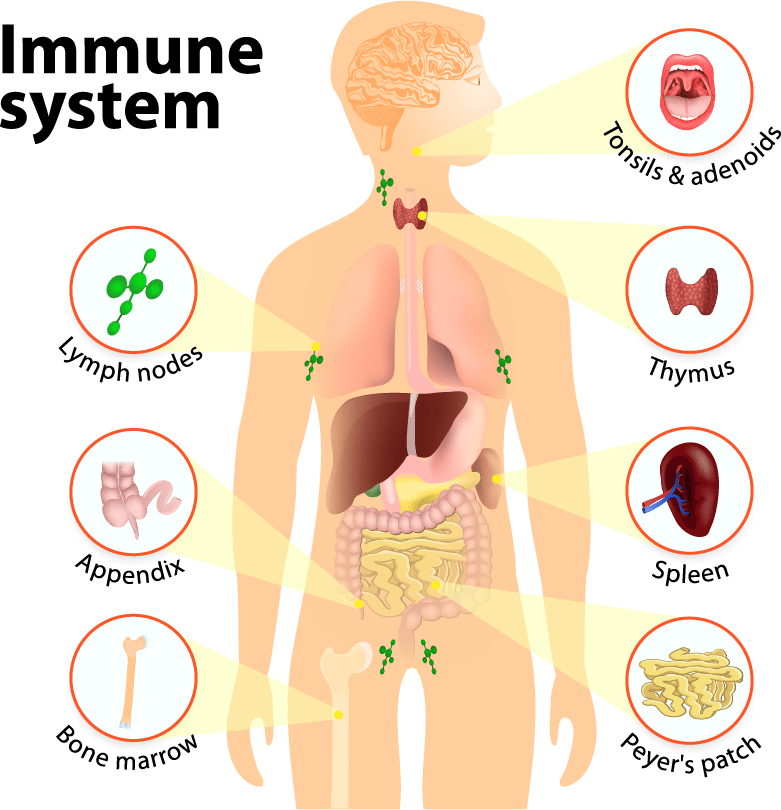Our Immune System
The immune system and microbial infection
The immune system keeps a record of every microbe it has ever defeated, in types of white blood cells (B- and T-lymphocytes) known as memory cells. This means it can recognise and destroy the microbe quickly if it enters the body again, before it can multiply and make you feel sick.
Some infections such as flu and the common cold, have to be fought many times because so many different viruses or strains of the same type of virus can cause these illnesses. Catching a cold or flu from one virus does not give you immunity against the others.
Parts of the immune system
The main parts of the immune system are:
- white blood cells
- complement system
- antibodies
- lymphatic system
- bone marrow
- spleen
- Thymus.
White blood cells
White blood cells are the key players in your immune system and are made in your bone marrow and are part of the lymphatic system.
White blood cells move through blood and tissue throughout your body, searching for foreign invaders (microbes) such as bacteria, viruses, parasites and fungi. After finding them, they launch an immune attack.
White blood cells include lymphocytes (such as B-cells, T-cells and natural killer cells), and many other types of immune cells.
Antibodies
Antibodies help the body to fight microbes or the toxins (poisons) they produce. By doing so this recognises substances called antigens on the surface of the microbe, or in the chemicals they produce, which mark the microbe or toxin as being foreign. The antibodies then mark these antigens for destruction. There are many cells, proteins and chemicals involved in this attack.
Complement system
The complement system is made up of proteins whose actions complement the work done by antibodies.
Lymphatic system
The lymphatic system is a network of delicate tubes throughout the body. The main roles of the lymphatic system are to:
- manage the fluid levels in the body
- react to bacteria
- Absorb some of the fats in our diet from the intestine.
- deal with cancer cells
- deal with cell products that otherwise would result in disease or disorders
- The lymphatic system is made up of:
- lymph nodes (also called lymph glands) -- which trap microbes
- white blood cells (lymphocytes).
Spleen
The spleen is a blood-filtering organ that removes microbes and destroys old or damaged red blood cells. It also makes disease-fighting components of the immune system (including antibodies and lymphocytes).
Bone marrow
Bone marrow is the spongy tissue found inside your bones. It produces the red blood cells our bodies need to carry oxygen, the white blood cells we use to fight infection, and the platelets we need to help our blood clot.
Thymus
The thymus filters and monitors your blood content. It produces the white blood cells called T-lymphocytes.











 Play Store
Play Store
Comments (0)
No Comments.